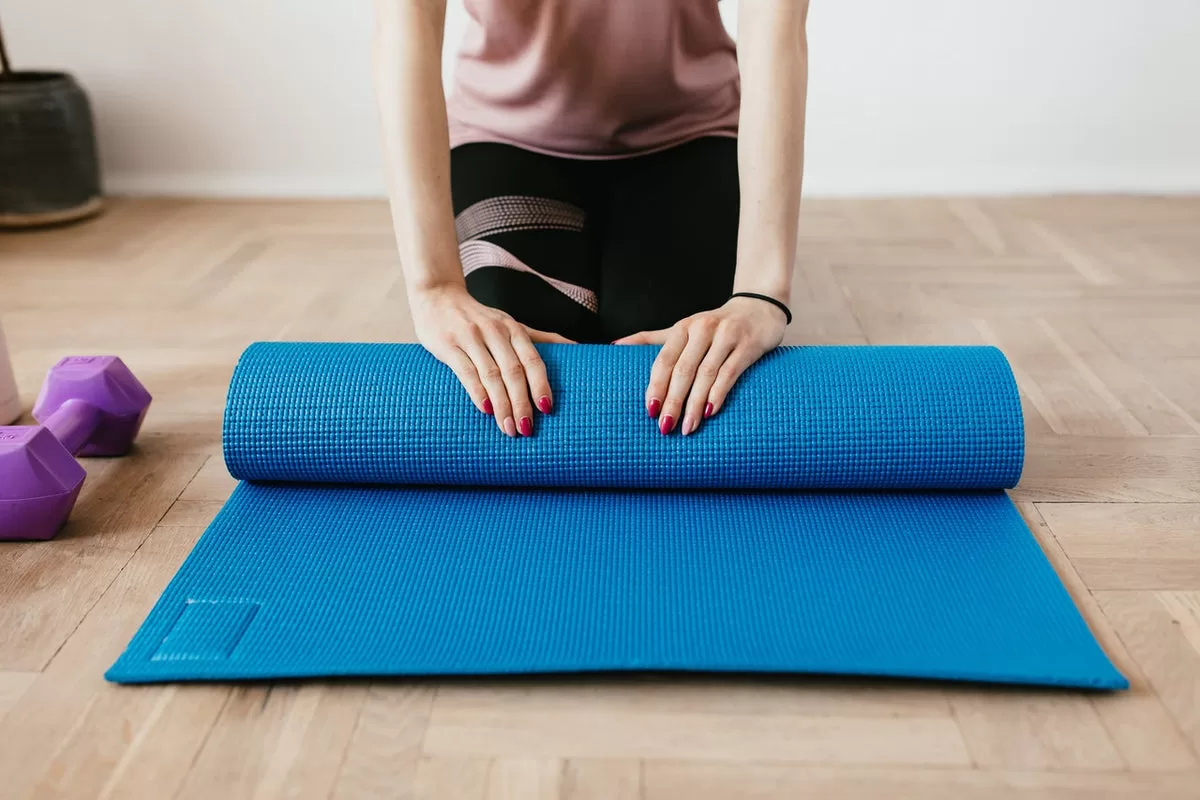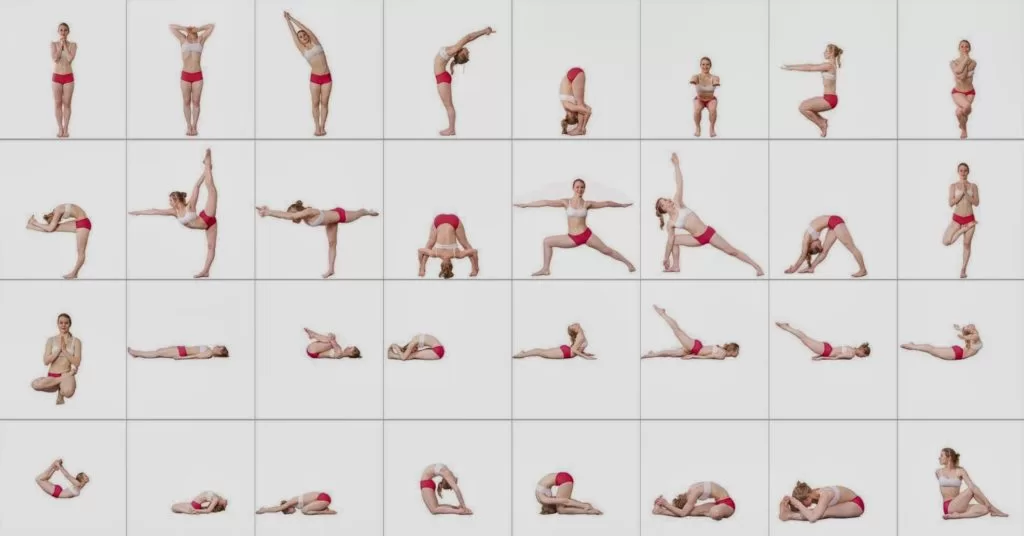
What Size Yoga Mat Should I Use?
As yoga continues to gain popularity, many people are wondering what size yoga mat they should use. While it may seem like a simple question, the answer can actually have a significant impact on your yoga practice. Choosing the right size mat can help you feel more comfortable, stable, and focused, allowing you to fully immerse yourself in your practice.
There are a few factors to consider when selecting the right size yoga mat for you. The type of yoga you practice, your height, and your personal preferences all come into play. In this article, we will explore these factors in more detail and help you determine what size yoga mat is best for you. So, whether you’re a seasoned yogi or a beginner just starting out, read on to learn how to choose the perfect yoga mat size for your practice.
The size of the yoga mat you should use depends on your height and the type of yoga you practice. For individuals who are 5’4″ or shorter, a standard yoga mat that measures 68 inches long and 24 inches wide should suffice. For taller individuals, a longer mat that measures 72 inches or 74 inches may be more appropriate. If you practice hot yoga, you may want a mat with more grip and better sweat absorption.

What Size Yoga Mat Should I Use?
Are you a beginner in yoga and confused about what size yoga mat to use? Choosing the right size yoga mat is important for your comfort and stability during your practice. In this article, we will guide you through the different sizes of yoga mats and help you choose the perfect one for your needs.
Standard Yoga Mat Size
The standard size of a yoga mat is 68 inches long and 24 inches wide. This size is suitable for most people and allows for comfortable movement during your practice. The thickness of the mat can vary, but the standard thickness is around 4-5mm, providing enough cushioning for your joints.
If you are taller than average or have a larger frame, you may want to consider a longer and wider mat. This will give you more space to move around and prevent you from having to constantly adjust your position during your practice.
When it comes to thickness, if you have sensitive joints or prefer more cushioning, you can opt for a thicker mat. However, keep in mind that thicker mats can be heavier and more difficult to carry around.
Travel Yoga Mat Size
If you frequently travel or practice yoga on the go, a travel yoga mat may be the best option for you. These mats are usually thinner and lighter than standard mats, making them easy to carry around in your backpack or luggage.
The size of a travel yoga mat can vary, but most are around 68 inches long and 24 inches wide, the same as a standard mat. However, they may be thinner, around 2-3mm, to make them more compact and lightweight.
Extra Large Yoga Mat Size
If you need more space to move around during your practice or have a larger frame, an extra-large yoga mat may be the ideal choice for you. These mats can range from 72 to 84 inches long and 24 to 36 inches wide, providing ample space for your movements.
An extra-large mat can also be beneficial if you practice partner yoga or want to do more challenging poses that require more room. Keep in mind that these mats can be heavier and more difficult to store and transport.
Kids Yoga Mat Size
If you have children who practice yoga, a kids yoga mat may be the perfect size for them. These mats are smaller than standard mats, usually around 60 inches long and 20 inches wide, to accommodate children’s smaller frames.
Kids yoga mats can also be thinner than standard mats, around 3-4mm, to make them easier for children to carry and use. They may also come in fun and colorful designs to make yoga more appealing to kids.
Benefits of Using the Right Size Yoga Mat
Using the right size yoga mat can have several benefits for your practice. Firstly, it can improve your comfort and stability during your practice, allowing you to focus more on your breath and movements.
A properly sized mat can also prevent injuries by providing enough cushioning for your joints and preventing slips and falls. It can also allow you to fully extend your limbs during poses, helping you to achieve a deeper stretch.
Yoga Mat Thickness: Pros and Cons
The thickness of your yoga mat can also have an impact on your practice. Thicker mats provide more cushioning for your joints and may be more comfortable, especially if you have sensitive knees or wrists.
However, thicker mats can also be heavier and more difficult to transport. They may also make it harder to balance in standing poses, as you may sink into the mat.
Thinner mats, on the other hand, are lighter and easier to carry around. They may also help you to maintain better balance in standing poses, as there is less cushioning to sink into. However, they may not provide enough cushioning for your joints, especially if you have a history of joint pain or injuries.
Yoga Mat Size Vs Weight
When choosing a yoga mat, it’s important to consider both the size and weight of the mat. A larger mat may provide more space to move around but may be heavier and more difficult to transport.
On the other hand, a lighter and more portable mat may be easier to carry around but may not provide enough space for your movements. It’s important to find a balance between size and weight that works for your needs.
Conclusion
Choosing the right size yoga mat is important for your comfort and stability during your practice. Whether you opt for a standard, travel, extra-large, or kids mat, make sure it fits your needs and preferences.
Consider factors such as size, thickness, and weight when choosing a mat, and don’t be afraid to try out different options until you find the perfect one for you. With the right size yoga mat, you can enhance your yoga practice and take your movements to the next level.
Frequently Asked Questions
What size yoga mat should I use?
Choosing the right size yoga mat depends on your height and body type. The standard size yoga mat is 68 inches long and 24 inches wide. If you are over 6 feet tall or have a larger body type, you may want to consider a mat that is longer and wider to accommodate your size comfortably. It’s important to have enough space to move freely and perform all yoga poses without feeling cramped or restricted.
On the other hand, if you are shorter in stature or have a smaller frame, a thinner and narrower yoga mat may be more suitable for you. The key is to find a yoga mat that allows you to practice yoga with ease and comfort. Don’t be afraid to try out different sizes and thicknesses to find the one that works best for you.
What thickness should my yoga mat be?
The thickness of your yoga mat is another important factor to consider. Thicker mats provide more cushioning and support, which can be beneficial for those with joint pain or injuries. However, thicker mats can also be heavier and less portable than thinner mats. The standard thickness for most yoga mats is around 1/8 inch, but thicker mats can range from 1/4 inch to 1/2 inch.
If you plan on practicing yoga primarily at home or in a studio, a thicker mat may be a good choice. However, if you plan on traveling with your mat or practicing yoga outside, a thinner and more lightweight mat may be more convenient. Ultimately, the thickness of your yoga mat comes down to personal preference and the type of yoga you practice.
What material should my yoga mat be made of?
Yoga mats can be made from a variety of materials, including PVC, rubber, cork, and natural materials like cotton and jute. PVC mats are the most common and affordable option, but they are also less environmentally friendly than other materials. Rubber mats are more eco-friendly and offer good grip, but they can be heavy and have a strong rubber smell.
Cork and natural mats are also eco-friendly and have a non-slip surface, but they can be more expensive than other materials. Ultimately, the material you choose for your yoga mat depends on your priorities and preferences. Consider factors like sustainability, grip, and comfort when choosing a material for your mat.
Can I use a towel instead of a yoga mat?
While you can technically use a towel instead of a yoga mat, it is not recommended. Towels are not designed to provide the same level of grip and support as a yoga mat, which can make it more difficult to perform yoga poses safely and effectively. Towels can also bunch up or slide around on the floor, which can be distracting and dangerous.
If you don’t have a yoga mat, it’s better to practice on a carpet or other non-slip surface than to use a towel. However, investing in a good quality yoga mat is ultimately the best option for a safe and comfortable yoga practice.
How do I care for my yoga mat?
Regular cleaning and maintenance is important to keep your yoga mat in good condition and extend its lifespan. Most yoga mats can be cleaned with a solution of mild soap and water, but be sure to check the manufacturer’s instructions for specific care instructions.
After each use, wipe down your mat with a damp cloth or spray it with a mat cleaner to remove sweat and bacteria. Let your mat air dry completely before rolling it up and storing it in a cool, dry place. Avoid exposing your mat to direct sunlight or extreme temperatures, as this can cause the material to break down and deteriorate faster.
What Size Yoga Mat Is Standard?
Choosing the right size of yoga mat can make a significant difference in your yoga practice. It is important to consider your height, the type of yoga you practice, and the amount of space you have available. A yoga mat that is too small can hinder your movements, while a mat that is too large can be cumbersome and difficult to carry. Ultimately, the size of your yoga mat should allow you to comfortably move and flow through your practice.
In addition to size, it is important to consider the quality of the yoga mat. A high-quality mat can provide better grip, cushioning, and durability. Investing in a good mat can enhance your yoga practice and provide more support for your body. Whether you are a beginner or an experienced yogi, choosing the right size and quality mat can make a significant difference in your practice. So take the time to do your research, and find the perfect mat that suits your needs and enhances your yoga journey.

